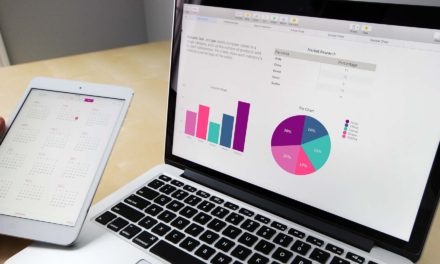Disclaimer: Startup Hive does not provide legal advice, nor do we guarantee any return on investment.
In the dynamic world of creative entrepreneurship, where innovation and inspiration fuel your journey, achieving your business goals is both an art and a science. To strike the right balance between your creative vision and measurable success, you need a powerful tool at your disposal: Key Performance Indicators (KPIs).
In this comprehensive guide, we’ll explore what KPIs are, why they matter, and how to harness their potential to steer your creative venture toward prosperity.
What Are KPIs?
Key Performance Indicators, or KPIs, are quantifiable metrics that provide a clear and objective view of your business’s performance. They serve as guideposts along your entrepreneurial path, helping you track progress, identify strengths, pinpoint weaknesses, and make informed decisions.
Examples of KPIs for Creative Entrepreneurs:
- Website Traffic: Monitor the number of visitors to your website, their demographics, and their behavior to optimize your online presence.
- Conversion Rate: Measure the percentage of website visitors who take a desired action, such as making a purchase or signing up for your newsletter.
- Customer Lifetime Value: Assess the long-term value of each customer to guide your marketing and customer retention efforts.
- Social Media Engagement: Track likes, shares, comments, and follower growth to gauge your social media impact.
- Revenue Growth: Measure your business’s overall revenue growth over time to ensure it aligns with your financial objectives.
- Project Completion Time: For creative projects, monitor how well you meet project deadlines and budgets.
- Client Satisfaction: Collect client feedback and measure satisfaction scores to enhance the quality of your services.
Why Do KPIs Matter?
- Focus and Clarity: KPIs crystallize your business objectives. They define what success looks like, ensuring you stay aligned with your vision.
- Measure Progress: KPIs provide a measurable way to gauge your progress toward your goals. They answer the crucial question: Are you heading in the right direction?
- Identify Opportunities: By analyzing KPI data, you uncover opportunities for improvement, growth, and innovation. They help you see what’s working and what isn’t.
- Enhance Decision-Making: Armed with KPI insights, you can make informed decisions. Whether it’s allocating resources, adjusting strategies, or pivoting your creative focus, KPIs guide your choices.

How to Use KPIs Effectively
STEP 1: Define Clear Objectives
Start by setting clear, specific, and achievable goals.
- Define Your Business Objectives First:
Start by clarifying your overall business objectives. What do you want to achieve in the short term and long term? Your KPIs should directly align with these objectives. - Break Down Your Objectives:
Divide your broader objectives into smaller, more manageable components. These components become the specific areas you’ll focus on with your KPIs. - Utilize the SMART criteria to structure your goals:
-
- Specific: Your goals should be clear and well-defined. Avoid vague or ambiguous language. E.g.: Increase monthly website traffic.
- Measurable: Ensure that you can quantify and measure your progress. Use numbers or percentages. E.g.: “By 20%.”
- Achievable: Set goals that are realistic and attainable based on your resources and constraints. E.g.: “In the next 6 months.”
- Relevant: Your goals should directly relate to your business objectives and the KPIs you’re tracking. E.g.: “To boost online visibility and brand awareness.”
- Time-bound: Establish a timeframe or deadline for achieving each goal. This adds a sense of urgency. E.g.: “Starting from the first day of the next quarter and ending by the last day of the current fiscal year.”
4. Align with KPIs:
Identify the specific KPIs that correspond to each of your SMART goals. For example, if your goal is to increase website traffic by 20% in six months, the relevant KPI is website traffic growth.
-
- Select Relevant KPIs: Choose KPIs that directly reflect your goals and the unique nature of your creative business. Common KPIs include revenue growth, customer acquisition, conversion rates, and customer retention.
- Document Your Goals: Write all your SMART goals and their corresponding KPIs and keep them in a clear and accessible format to regularly review and track progress.
STEP 2: Establish Benchmarks
Establish benchmarks or targets that indicate progress toward your goals.
- Set Benchmark Targets: Determine what success looks like for each KPI. This is your benchmark or target. Use historical data, industry standards, or competitor benchmarks as references
- Prioritize Goals: Not all goals are equally important. Prioritize them based on their impact on your business objectives and available resources.
- Communicate Your Goals: Ensure that your team understands and is aligned with these goals. Clear communication fosters a shared sense of purpose.
- Consider Dependencies: Be aware of how achieving one goal may impact another. Ensure that your goals are not in conflict with each other.
STEP 3: Collect and Analyze Data
- Monitor and Adjust: Set a schedule to constantly monitor your KPIs and compare your actual performance against your benchmarks. If you’re falling short, adjust your strategies accordingly. Use data analytics tools and reporting systems to track changes over time.
- Review and Revise: Periodically review and revise your goals and KPIs as your business evolves. What’s relevant today may not be the same in the future. KPIs are not static; as your business evolves, so should your KPIs. Regularly review and update them to stay relevant.
- Adapt and Optimize: Based on KPI insights, adapt your strategies as needed. If a KPI is falling short of its target, explore strategies to improve it.
- Celebrate Milestones: Recognize and celebrate your achievements along the way. This can boost morale and motivation among your team.
Conclusion
KPIs are the compass that keeps your creative entrepreneurial ship on course. By setting clear objectives, selecting relevant KPIs, and consistently monitoring and adapting, you can harness the power of KPIs to achieve your creative vision while achieving measurable success. Incorporating KPIs into your entrepreneurial journey is not just a business strategy; it’s the bridge between your creative dreams and tangible achievements.
We wish you a bright future and great success!
— The Startup Hive Team
At Startup Hive, we help creative entrepreneurs thrive beyond the gig economy by taking control of their financial life. If you consider yourself creative enough to get at least one of your ideas off the ground, we are here for it.
Schedule a Discovery Call and let us help you help people.



